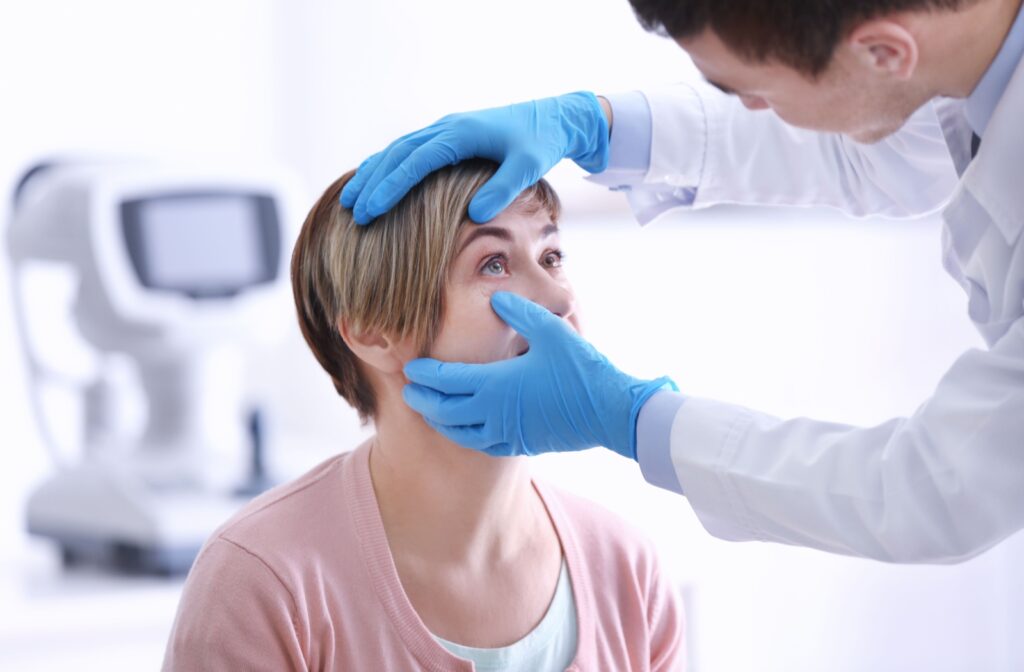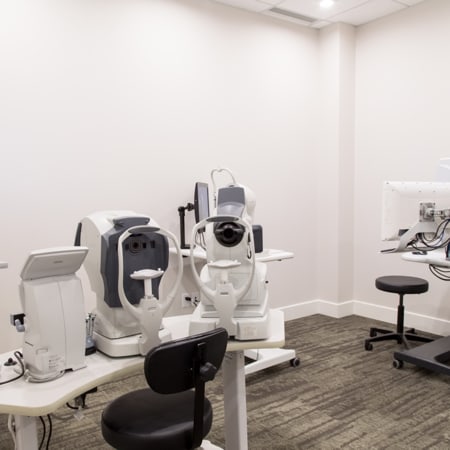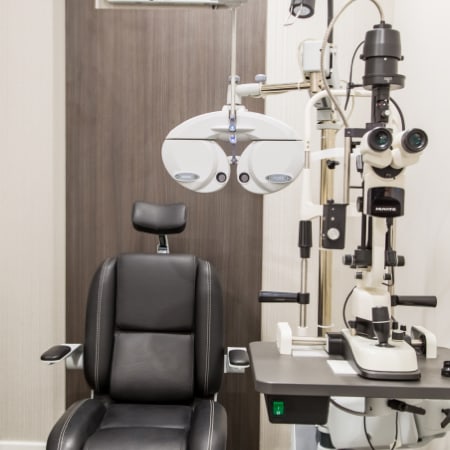Eye discomfort can be recognized by the whites of our eyes turning pink. Some individuals may use “pink eye” as an umbrella term for anything that causes the eye to appear red or pink due to inflammation or infection.
Pink eye (conjunctivitis) is not an umbrella term for any irritation of the eyes. Several other eye conditions like dry eyes, keratitis, styes, blepharitis, allergies and others, can produce symptoms similar to conjunctivitis.
Visiting an optometrist for an accurate diagnosis of your irritated eye is important in order to get the correct treatment and relief.
What is Pink Eye?
Pink eye is an actual eye condition which is also known as conjunctivitis. Conjunctivitis occurs when the conjunctiva, a clear thin membrane that protects the eye becomes inflamed by irritation from allergies or infection. This makes the surface over the white part of your eye look red.
Symptoms of conjunctivitis can include:
- Pink or red discoloration of the eye
- Itching, irritation, or burning of the eye
- Gritty sensation in the eye
- White or green sticky discharge
- Watery eyes
- Swollen eyelids
- Blurry vision
There are three main types of conjunctivitis:
- Viral conjunctivitis: This is caused by the same virus associated with the common cold and upper respiratory tract infections. Symptoms include red eyes, itching, burning sensation, and watery discharge.
- Bacterial Conjunctivitis: This is more common in children than adults. Symptoms include painful and sore red eyes, yellow or green sticky pus, and little to no discharge.
- Allergic Conjunctivitis: Allergens like pollen, dander, smoke, or chlorine can trigger an allergic reaction and cause allergic conjunctivitis. Symptoms include itchy, red, and watery eyes, and can cause the eyelids to become swollen and puffy.
Viral and bacterial conjunctivitis are contagious and can spread quickly. During exposure, It’s important to wash your hands and avoid touching your eyes, avoid using makeup products to prevent cross-contamination, avoid sharing towels and cloths, and avoid wearing contact lenses to help encourage healing and prevent the spread of viruses or bacteria.
How is Pink Eye Diagnosed
A diagnosis of conjunctivitis from your optometrist helps to determine the appropriate treatment option.
An individual’s patient history helps to determine the symptoms they’re experiencing, when they began, and whether environmental triggers caused them. Your optometrist will evaluate the health of your eye by assessing the conjunctiva and external eye tissue using bright light and magnification.
In cases concerning chronic conjunctivitis where an individual is not responding to treatment, your optometrist may take cultures of conjunctival tissue and any discharge for additional testing.
Treatment & Management of Pink Eye
Treating pink eye depends on the type of conjunctivitis you have which is why diagnosis is important. Conjunctivitis can go away on its own within 1-2 weeks, but certain tools and treatments can be used to help encourage recovery.
Artificial tears can help provide moisture, hydration, and comfort to your eyes.
There is no specific treatment option for viral conjunctivitis, your body has to fight the infection on its own. Placing a cold compress on your eyes can help alleviate irritation and increase comfort.
Your optometrist may prescribe antibiotic eye drops for bacterial conjunctivitis.
Allergic conjunctivitis usually improves by removing the allergen from an individual’s environment.
Eye Conditions That Can Be Misdiagnosed as Pink Eye
The pink and red discoloration of the eye can be mistaken for conjunctivitis, but these symptoms are not unique to conjunctivitis and can be caused by several eye conditions. Additional symptoms can manifest in other eye conditions which helps to differentiate the various forms of “pink eye”.
Dry Eye Syndrome
Dry Eye Syndrome (DES) is a common condition that occurs when the eye doesn’t make enough tears, or the created tears evaporate too quickly. This leads to dryness, redness, and sometimes excessive watering, due to the eyes trying to compensate for the lack of adequate moisture.
Symptoms of dry eye are similar to conjunctivitis, but dry eyes can cause your eyes to sting and are usually a chronic condition. Conjunctivitis appears suddenly.
Keratitis
Keratitis, also known as a corneal ulcer, is caused by the inflammation of the cornea, often due to infection or injury. This condition is the most common cause of corneal blindness.
Symptoms include red eyes, blurry vision, decreased vision, foreign body sensation in the eye, and eye pain.
Keratitis shares the same symptoms as conjunctivitis, but keratitis may be more painful and is a far greater threat to one’s vision.
Stye
A stye is a small, painful lump like a pimple that can occur on the inside or outside of the eyelid, typically from a bacterial infection or inflamed meibomian gland. It’s often confused with pink eye due to the redness and swelling of the eye.
The bump along the eyelid is what differentiates a stye from conjunctivitis.
Blepharitis
Blepharitis results in inflammation of the eyelids, causing redness, itching, and sometimes crusting along the edges of the eyelids. Individuals with blepharitis may wake up with their eyelids stuck together.
Symptoms can mimic those of pink eye, but the focal areas of inflammation along the eyelids and the absence of typical pink eye discharge differentiate the two conditions.
Demodex
Demodex mites are naturally found on the skin in small amounts. They are usually beneficial as they help remove dead skin cells, however, an excess amount of Demodex mites can have adverse effects even leading to blepharitis.
Common symptoms of a Demodex mite infection are dry, itchy skin, redness, and eyelid inflammation. Fortunately, maintaining a good skincare routine can help control their population.

The Importance of Accurate Diagnosis
Recognizing that the eye is irritated and inflamed doesn’t necessarily provide the most beneficial treatment.
Conjunctivitis, dry eye, keratitis, styes, and blepharitis require specific management, and a misdiagnosis can result in inadequate healing or worsen your ocular health. If an eye condition’s root cause is not accurately identified, it may become chronic, impacting vision and leading to further ocular complications.
Even if you are certain about the diagnosis of your pink, irritated eye, consult your optometrist. Your eye care professional can help determine the best treatment option for your ocular health and can prescribe any necessary medication required for your treatment.
Schedule a Visit With Us!
Visiting your optometrist for comprehensive exams and health checks is encouraged to maintain good ocular health and vision.
If you’re experiencing eye irritation or discomfort, contact our team for a visit.
















